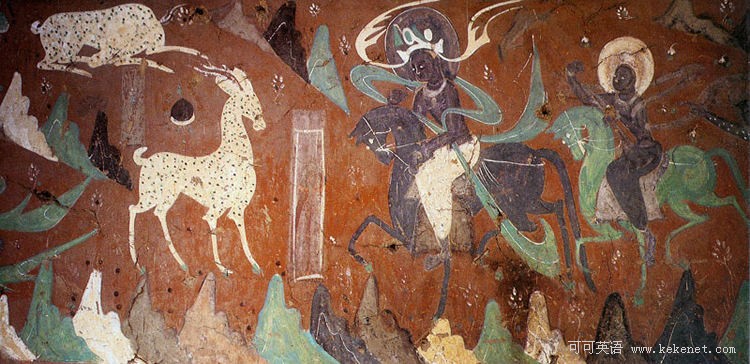Instead of showing the history of Dunhuang in a safe, linear way, Zhou Bing decided his documentary should have its own characters, each of them involved with Dunhuang this way or another.

Zhou Bing: [in Chinese] "Most characters are people whose stories were recorded in history books. We also have characters that lived or still live in the modern time, mostly researchers and scholars who devoted their lives to studying and protecting Dunhuang's historical sites. Only one character was fictional. It was a dancer who fled to Dunhuang from the then capital city Chang'an amid a civil war."
The director says the reason he had to make up such a character is he couldn't find a real one in history books, and yet he needed a dancer to fill a blank in the picture.
He feels confident about using the character because historical records show that a coup d'état resulted in a mass immigration of people who served at the imperial court to Dunhuang; among them, many dancers.
Furthermore, many murals in Dunhuang's caves feature scenes of music and dance performances clearly in the imperial court style.
Still, the director says he stands ready to defend himself against criticism.
Zhou Bing: [in Chinese] "I have braced myself for possible critiques on that, but I have consulted many scholars, domestic and from abroad, and they all assured me that it is a legitimate practice to incorporate fictional characters into a documentary of this nature."
He tells me that he deliberately created a "docudrama," which, just like the structure of the word, means blending documentary and feature film techniques.
Currently, this technique is commonly applied in educational and informative TV productions by prestigious networks such as the iconic Discovery channel of the United States and NHK of Japan.
But 15 years ago in China, it was Zhou Bing and his colleagues who first introduced it to the Chinese TV scene.











